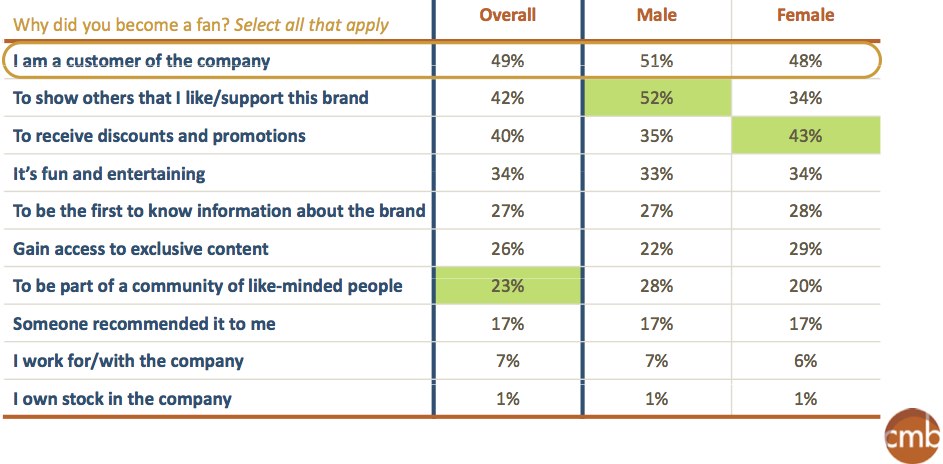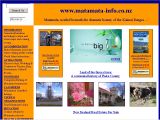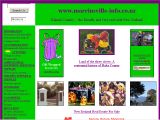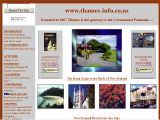By Brian Solis
Expert Author
Article Date: 2010-10-27
Facebook is, at the moment, the most important social network in the world. Over 500 million people connect to one another in the "Social Network." And, with the introduction of the Open Graph, we are interacting with our Facebook connections on our favorite websites where our social graph and the corresponding activity of Likes, interaction, and commentary become the centerpiece for social curation and more importantly, our focused attention. We are putting our social network to work and we are learning how to share, discover, and collaborate in public.
Brands, regardless of size and focus, are converging on Facebook where the idea of connecting with customers and prospects represents a potential boon for both earning relevance in a new domain as well as expanding overall reach. Facebook is a sparkplug for word of mouth and when engaged, contributes to the end of business as usual and the beginning of social commerce. If fact, the top 10 brands on Facebook today host over 100 million "Likes" on Facebook.
The Top 10 Brands by Population (Rounded Out)
1. Starbucks - 16 million
2. Coca-Cola - 15 million
3. Oreo - 12 million
4. Skittles - 11.5 million
5. Red Bull - 10.2 million
6. Victoria's Secret - 8.4 million
7. Disney - 8.3 million
8. Converse All Star - 7.3 million
9. iTunes - 7 million
10. Windows Live Messenger - 6.8 million
With that said…
By This Time Next Year
By this time next year, you as a brand or as a brand representative, will spend more time and resources on Facebook than you will on Twitter.
Allow me to clarify this statement as it's easy to misread. My sentiment is merely a reflection of the maturation of the social web and the commitment and attention required to cultivate communities, inspire advocacy, and foster engagement. Facebook and Twitter are unique in their design and their culture and each offer distinguishing opportunities for businesses. As such, they demand a dedicated focus, strategy, and approach.
Twitter is important and essential to learning, engaging, and cultivating customer communities. I believe that Twitter is your window to relevance, both understanding how to identify and earn it.
Facebook, as both a network and a platform, is unlocking new and important connections between people, brands, content, and data. The technical and creative aspects of what Facebook is capable of facilitating on behalf of your business and the people who define your markets, requires indoctrination. And, once we explore the culture and technical advantages of Facebook Connect, Likes, and the scope and possibilities of the open graph, we get an idea of the deepening emphasis required to transform Facebook from a "Fan Page" to a bona fide brand page, creating nothing less than a social epicenter for business.
If Twitter is your window to relevance, Facebook is your focal point for the social web.
Nothing goes without saying here. It is also important for you to invest in learning about where, when, and how your social consumer engages with peers as they most likely connect in other networks beyond Facebook and Twitter. It was after all, the inspiration for the Conversation Prism. Facebook is just one, albeit pivotal, pillar in your socialized business strategy.
The State of The Facebook
With over 500 million active users, Facebook is by far one of the most important networks in the world. 5o% of those active users log on to Facebook in any given day. And in total, people spend over 700 billion minutes per month posting, sharing, Liking, commenting, poking, playing games, and interacting with one another as well as the content and applications that define the pervasive social ecosystem.
The average user is connected to 80 community pages, groups and events and creates 90 pieces of content (social objects) each month. If you follow Zuckerberg's Law, then we will double the amount of content we share every year. When combined, the numbers are staggering. More than 30 billion social objects (web links, news stories, blog posts, notes, photo albums, etc.) are shared each month. Facebook is a vortex for content.
Everyday individuals on Facebook maintain a social graph of 130 people, which is in line with Robin Dunbar's theory (Dunbar's number) of the maximum number of relationships we can effectively manage. However, with suggested friends, I believe that number will push us to expand our networks from relationships (strong ties) to relations(focused, weak, and temporary ties). I call this Social Graph Theory. And much like Zuckerberg's Law, Social Graph Theory suggests that the size of our network will grow, but more importantly, become much more complex, yet focused. We will maintain relationships, but also expand into a thinner form of relations that include interest graphs, nicheworks (contextual networks) and temporary connections. What's important for businesses to realize, is that individuals now maintain peer networks that resemble engaged audiences where interests are the axis of conversational rotation.
Brands are increasingly globalizing and Facebook scales with the reach that they need. Currently over 70 translations are available and more than 70% of all Facebook denizens reside outside of the United States. And more than one million developers and entrepreneurs from more than 180 countries support Facebook as a "platform" with greater than one million websites integrating Facebook sharing, liking and visualized social graph features into content discovery and consumption. So, what does that mean? Integrate Facebook functionality into your online properties (in addition to other relevant social presences of course). Two-thirds of comScore's U.S. Top 100 websites and half of comScore's Global Top 100 websites have integrated with Facebook.
And what of mobile?
Smart phones are the new sub-tablet so to speak. There are as many active users accessing Facebook on their mobile device as there are active users of Twitter. And that's a powerful statement. Today 150 million people access Facebook actively and they're twice as active on Facebook than non-mobile users.
May I Have Your Intention Please?
Many brands underestimate Facebook and what's truly required to attract and captivate the social consumer. In my research, I find that a significant number of brands focus their efforts primarily on Twitter, treating Facebook as an afterthought. Rather than engage in each community with purpose and dedication, examples are abundant where companies are simply syndicating tweets to Facebook rather than updating each network individually. When people reply on Facebook, representatives are usually unaware as they're mostly monitoring Twitter responses rather than Facebook. In these cases, Facebook becomes a graveyard for tweets instead of a community where likes are earned and conversations are fostered. After all, how do we expect to trigger the social effect without investing time and attention in the people who define the very social graphs we're hoping to engage and activate?
Facebook success is defined by our investment of time, resources, energy and creativity. In other words, we get out of it what we put into it. In Facebook, it's not just about who we're connected to, it's about those we're not. What started as "Fans" has evolved to "Likes" and in that simple shift in phraseology comes something quite profound. "Fans" implies a hierarchical relationships where brands publish at will to a community that feels a bit more like a traditional audience. "Likes" begets a linear form of relationships where we earn the endorsement of a social consumer, but in order to foster a community, we have to continue to do so. This introduces a peer-to-peer (P2P) dynamic where rather than program our Facebook activity from a top-down perspective, we now have to consider an active participatory role in earning Likes, attention, and hopefully advocacy much more frequently than we may have anticipated initially.
Likes become a form of social currency and contribute to the overall social capital earned by a brand within Facebook.
In February 2010, market research firm Chadwick Martin Bailey along with iModerate Research Technologies, surveyed over 1,500 individuals online as well as conducted one-on-one discussions to contextualize social media behavior. Their research shows us that social commerce and quite specifically, F-commerce (Facebook Commerce) is bursting at the seams.
Since actions speak louder than words, the study sought to answer the question of whether or not engagement actually leads to purchases. The answer is yes. An impressive 51% of Facebook fans and 67% of Twitter followers indicated that they are more likely to buy since connecting online.

Success begins with a plan, which serves as a roadmap to reach customers and those who influence them. On the road to success, it is wise to refer to the map routinely to ensure that we stay on course. Doing so, reminds us why we're here in the first place.
The roles of the social consumer are distinct and the reasons for connecting with a brand are equally diversified. It's our job to cater to each segment to earn their Likes and attention now and over time.

On Facebook, existing customers topped the list with 49%. Following with 42%, consumers felt compelled to show support for the brand. In third with 40%, individuals admitted that they hoped to receive discounts and promotions.
Other stats worth mentioning, 27% and 26% of respondents stated that they would like to be among the first to know information about the brand and also to gain access to exclusive content respectively. And, 17% claimed that they were referred to the page by someone that they knew, which already demonstrates word of mouth at work.
Facebook is changing the way we think about business, customers and community and as such, there's much to learn. Everything begins at the beginning and together, we will earn relevance and expand business opportunities in a new social marketplace one Like at a time.
About the Author:
Brian Solis is principal at FutureWorks PR, an award-winning PR and Social Media agency founded in 1999. FW PR bridges the communications gap between companies and their customers, and between products and their specific benefits for their target markets. Solis blogs at PR2.0, http://www.briansolis.com, and regularly contributes to many industry trades. He is also frequently quoted in articles relating to technology trends and Marketing/PR strategies.










